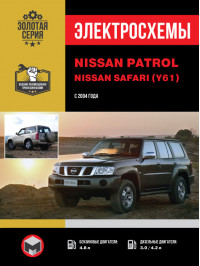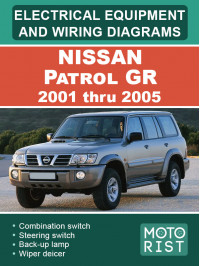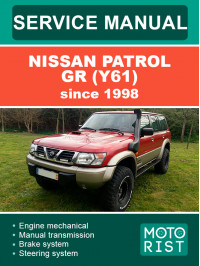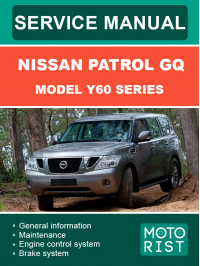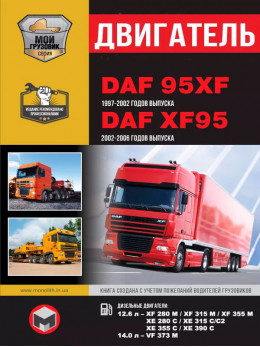Information on repair and maintenance of Nissan Patrol cars electronically
The Nissan Patrol is a four-wheel drive off-road vehicle produced by the Japanese manufacturer Nissan in Japan from 1951 to the present. Since 1980, it has been sold domestically as the Nissan Safari.
There are six generations of the Nissan Patrol, which is a legendary SUV with a rich history. The direct competitor of the Nissan Patrol is the Toyota Land Cruiser.
Characteristics of Nissan Patrol
The Nissan Patrol is available as a two-door, five-door or pickup truck. Various versions of the Patrol are widely used by various UN agencies. The car is famous for its power and durability.
The Nissan Patrol was produced exclusively with leaf springs until the 1980s, until the Y60 arrived in 1988, which featured coil springs for the first time. Almost all generations that were still designed as classic SUVs were available in different wheelbases.
Until the model change in 2010, it was traditionally produced as a classic SUV with a ladder frame, rigid axles and switchable all-wheel drive. With the transition to the Y62, the series was redesigned and the vehicle type changed to an SUV, which was reflected in the introduction of modern construction methods with a self-supporting body and independent wheel suspension.
Nissan Patrol is the first Japanese SUV in history. It was born in 1951 as a military vehicle with the project name 4w60 and with the intention of creating a rugged and reliable vehicle that could patrol the coasts and rugged hinterlands of Japan. Hence the name Patrol, which means patrol in English.
It was originally an SUV with a 6-cylinder 3700 cm³ petrol engine with 85 hp, which was replaced in 1956 by a 4000 cc petrol engine with 125 hp. The rear rod was used, the front plug-in.
The 4W61 was introduced in August 1955, it was similar to the 4W60 except for the grille (with some chrome strips), the one-piece windshield set back and folded down, chrome trim on the hood, and different sized seats. In October 1958, the 4W61 was discontinued and replaced by the 4W65.
By the end of 1959, the military version, produced in various versions (patrol, ambulance, fire brigade, mobile railway workshop), was followed by a version for civilian use.
In 2010, the current, sixth generation Nissan Patrol, known as the Y62, was introduced. This SUV has become more modern, spacious and offers a wide range of technological options.
With the release of the sixth generation Nissan Patrol, Nissan broke with the series' previous tradition. The new Nissan Patrol is no longer a classic SUV, but was designed as a luxury SUV. In North America, this generation has been sold as the Nissan Armada since 2016.
It is powered by a 5.6 liter V8 petrol engine with 298 kW (405 hp) and a maximum torque of 560 Nm, the diesel engine is no longer available. 7-speed automatic transmission is the only transmission option.
Nissan Patrol service manual
Regular care, maintenance and periodic repairs are an integral part of responsible vehicle ownership. Knowing the basic nuances of minor car repairs can significantly save the owner’s time and budget, as well as provide greater independence and confidence on the road.
Your site offers the opportunity to read, buy and download the Nissan Patrol repair manual in PDF format for free. In this guide you will find answers to many questions related to the repair of this model:
- how to replace cabin and fuel filters, which is an important part of car maintenance;
- how to repair the transmission yourself, which will help maintain the reliable operation of the gearbox;
- what are the main malfunctions that can occur in the electrical equipment of the car and how to fix them;
- how to properly repair brake pads and discs, which will ensure safety when braking, etc.
The Nissan Patrol repair manual contains a detailed description of the vehicle structure, main features and illustrations to help you understand various repairs.
However, it is important to remember that doing it yourself can be dangerous, especially for those who do not have the necessary knowledge and experience. Therefore, it is better to entrust complex and critical repairs to professional specialists or authorized service centers.





